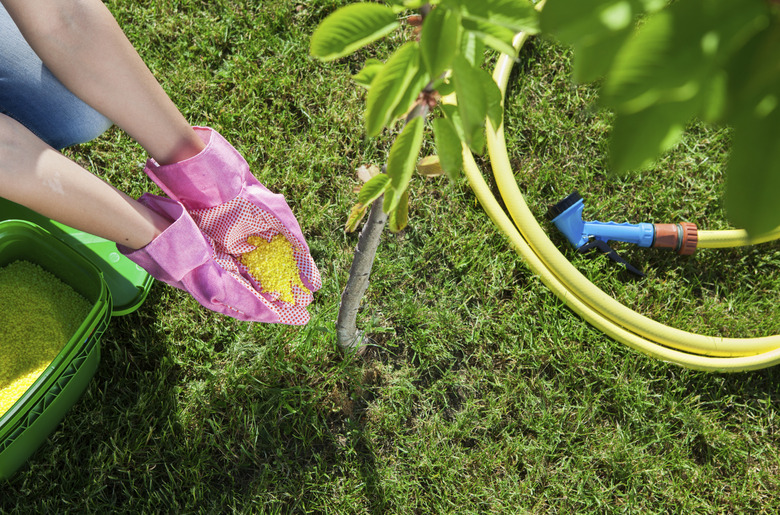Why And When To Use Fertilizers High In Potassium
Along with nitrogen and phosphorus, potassium is an essential plant nutrient used in large amounts by plants. Plants use potassium in photosynthesis and protein synthesis. A deficiency in potassium results in slow plant growth and off-color leaves; test the soil or plant tissue samples to identify a potassium deficiency. Use fertilizers high in potassium when the soil or plant tissues show low levels of potassium.
Step 1
Without the benefit of soil or tissue testing, consider a potassium deficiency if your plants grow more slowly than expected. Examine the lower, older leaves on the plant. If you notice light green or yellow leaves and brown leaf edges and tips, suspect a deficiency. Without fertilization, the leaves will eventually turn from yellow to brown and fall off. A lack of potassium makes plants more susceptible to temperature changes and drought and reduces disease resistance. Vegetables grown in potassium-deficient soil may ripen unevenly and have a poor texture. Stone fruit trees often produce poor-quality and smaller fruit.
Step 2
- Without the benefit of soil or tissue testing, consider a potassium deficiency if your plants grow more slowly than expected.
Soils Deficient in Potassium
Step 1
A potassium deficiency is more commonly found in soil with a low organic-matter content or in new garden areas. Sandy soils, especially in areas with high precipitation, may be low in potassium. Inadequate potassium usually isn't a problem in heavier and richer soils.
Types of Fertilizers High in Potassium
Step 1
All bags of fertilizer contain a three-number fertilizer grade. The last number in the series gives the percentage of potassium or potash. For example, a fertilizer with a grade of 5-5-10 contains 10 percent potassium. Examples of fertilizers with high potassium content include potassium sulfate with a grade of 0-0-50 and potassium chloride with a grade of 0-0-60.
Step 2
- A potassium deficiency is more commonly found in soil with a low organic-matter content or in new garden areas.
Amount of Potassium to Apply
Step 1
A soil or plant tissue test will accurately determine the amount of potassium fertilizer to incorporate into the soil. Colorado State University Extension says that if you aren't using a test, use 1/4 to 1/2 pound of potassium chloride or sulfate fertilizer per 100 square feet of garden area. Incorporate the fertilizer into the root zone by rototilling or spading. For best results, apply the fertilizer early in the spring. Or, select a high-potassium fertilizer to add to the irrigation water or spray on the foliage during the growing season.
